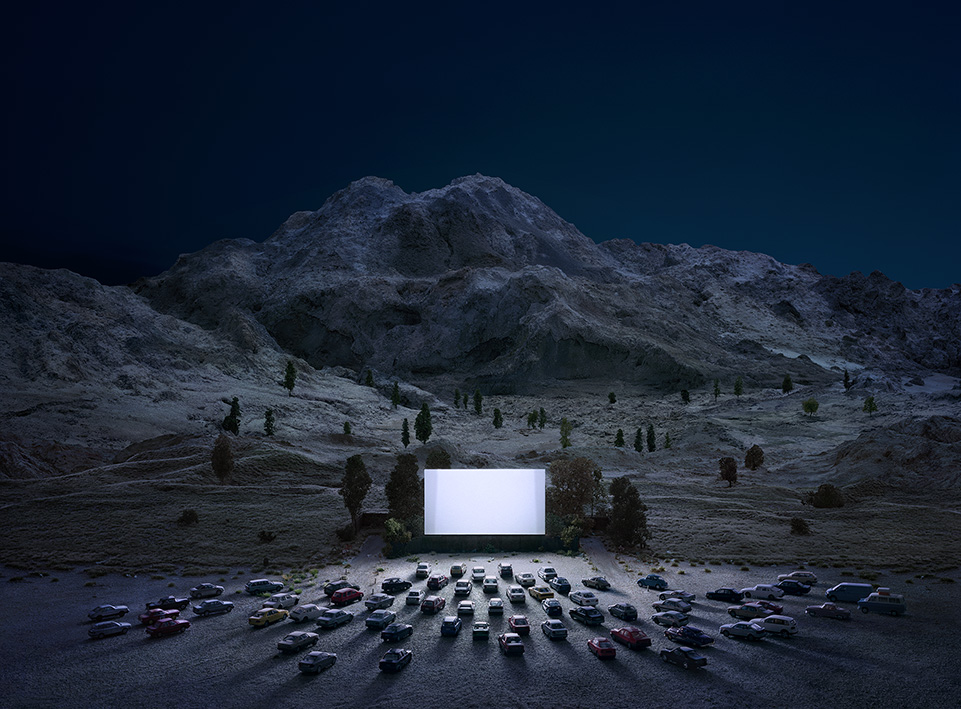In his photography “The luminous Screen” Thomas Wrede reverts to a classic motif of film and photography: the Autokino (see photographs by Hiroshi Sugimoto). In Wredes Autokino the parked vehicles stand in the reflective light of the screen in a wide, nocturnal landscape. A dark mountain range rises in the background. But in Wrede’s photography, the canvas does not reproduce a picture, but shines in the white light. The vehicles photographed from the distance and elevated point of view seem to be attracted by the light of how magically attracted. Where the image of the film should be seen, a white space is created, which gives the viewer room for his own pictures and associations. It is only by looking closely that you can see that they are toy models in a sand pit.
Walking around the world is important to me, to become inspired by landscape and its different lighting. Afterwards I use simple methods to create new worlds in my pictures: worlds that can only exist in photography, and that melt into the memorized images of the observer.
These photographs look as though they have been shot from the sky, but they are actually taken only a few centimeters from the ground. Small cars, houses and plastic trees in the classic model railway format are placed on the beach at the North Sea or in a pile of rubbish or ashes.
The microstructures of the sand are transformed in the eyes of the beholder into great macrostructures of the earth’s surface. Only at the second glance do the discrepancies and the incongruities of the proportions become recognizable.
The photos are made with an analogue large format camera in the free landscape and ultimately they are slightly digitally optimized. The observer is left with no sense of dimension, and that is the photographic illusion.
The vantage point of my work is always the longing for nature and the mediation thereof. I want to find the exact point in which people doubt whether it’s a model or reality. In my photographs the world is shown as a model construction set, as a staging with grand gestures in small measure, as a picture and a replica of idyll and catastrophe.
Thomas Wrede

